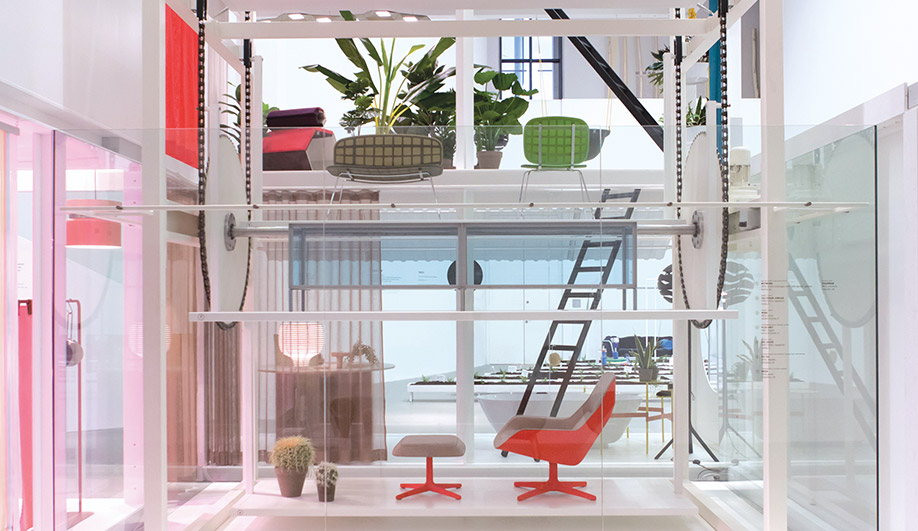
Visionary Werner Aisslinger imagines domestic life in the coming decades, where furniture grows like trees and robots tend to the vegetable garden.
While the words sustainability and innovation get liberally bandied about these days, German designer Werner Aisslinger long ago set himself at the forefront of material experimentation and manufacturing technologies. In 2012, his Hemp chair for Moroso combined both predilections by utilizing automotive production methods to form a stackable monobloc seat made using its namesake natural fibre; while Chair Farm, which he debuted that same year, revealed a revolutionary approach to manufacturing – one where a living plant did the heavy lifting. Trained to sprout around a steel frame, the living chair could be grown, literally, rather than be imported globally.

For a museum exhibition in Munich, Aisslinger has amalgamated a number of his products – for such brands as Moroso, Kvadrat, Flötotto and Vitra – and represented them as part of a future scenario for living. Titled House of Wonders, the installation invites visitors to imagine a utopian lifestyle on the near horizon, one where we interact with objects on more than a superficial level.
Indoors and outdoors, inhabitants harvest not only their own food but also their furniture. Previously single-purpose and separate spaces such as the kitchen and the living room blend into one farming/cooking/lounge zone centred around a “sofa landscape.” In response to Aisslinger’s belief that the “perpetual change of architectures, objects, rooms, and living circumstances will be tomorrow’s continuity,” the concept house is adaptable to give its users the freedom to manipulate its layout at will, and cars are upcycled piecemeal instead of replaced.

At first glance, it may seem an unorthodox dream, but as living spaces – and natural resources – continuously shrink, expecting our homes, and what we put in them, to do more for us than look good is actually a step towards a realistic (and unavoidable) future. House of Wonders is on view at Pinakothek der Moderne museum in Munich until September 17, 2017.
